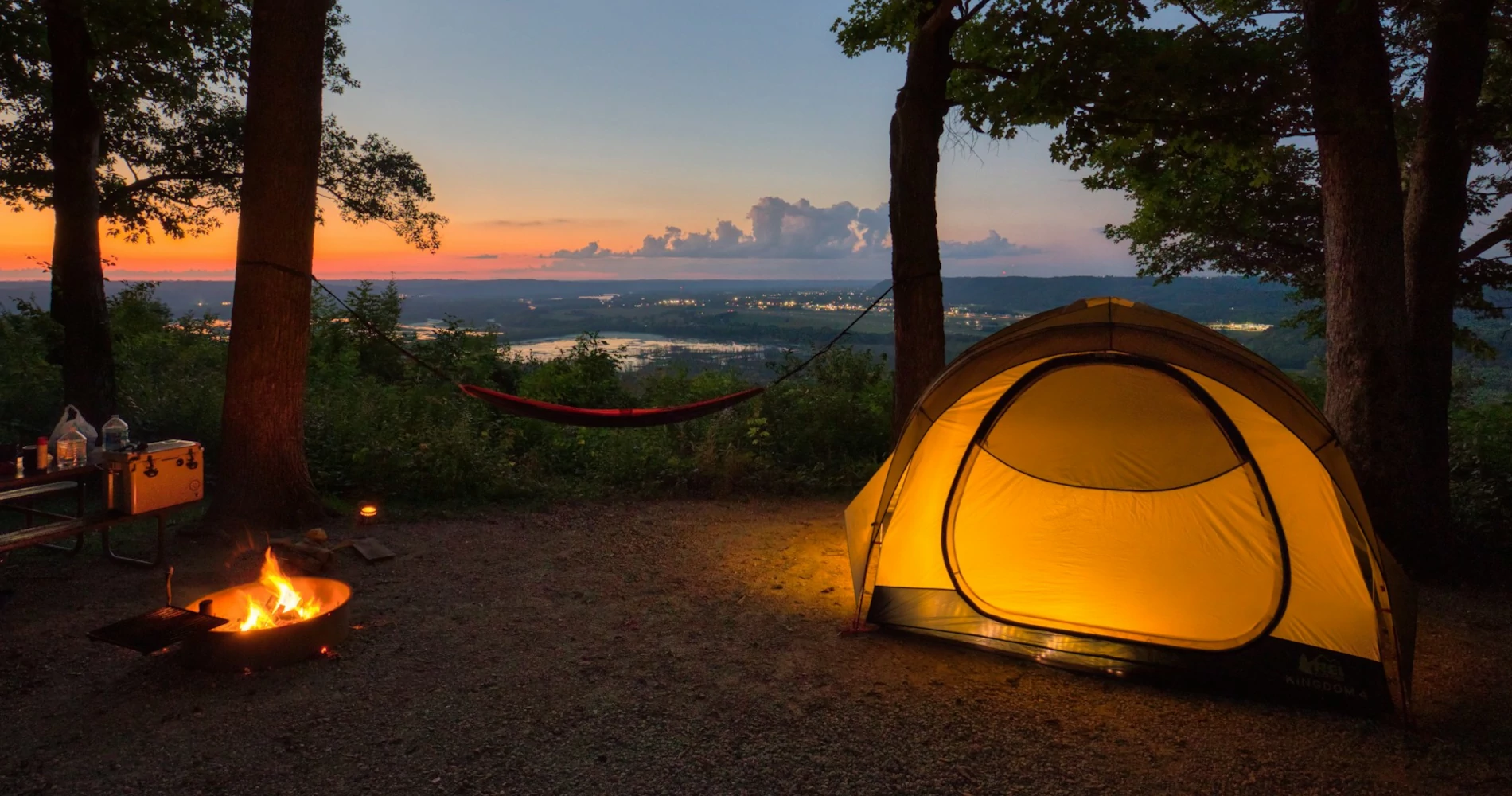The Principles of Leave No Trace: A Guide to Responsible Outdoor Ethics
Leave No Trace (LNT) is a set of outdoor ethics designed to promote responsible recreation and minimize human impact on the natural environment. Developed by the Leave No Trace Center for Outdoor Ethics, these principles provide guidelines for outdoor enthusiasts to follow, ensuring that natural spaces remain pristine and accessible for future generations. Whether you're hiking, camping, or simply enjoying nature, adhering to Leave No Trace principles helps preserve the beauty and integrity of our wilderness areas.
The importance of Leave No Trace cannot be overstated. As outdoor recreation continues to grow in popularity, so does the potential for environmental degradation. From soil erosion and water contamination to wildlife disturbances and litter, the impacts of human activities can be significant. By following the Leave No Trace principles, we can mitigate these effects, protect ecosystems, and maintain the health and beauty of natural landscapes. Practicing Leave No Trace not only conserves the environment but also enhances the outdoor experience for everyone, promoting a culture of respect and stewardship for our planet.
Key Points:
- Minimize Impact: Leave No Trace principles focus on minimizing environmental impact to protect natural habitats.
- Promote Sustainability: Adhering to these guidelines ensures sustainable outdoor practices, preserving nature for future generations.
- Enhance Experience: Responsible recreation leads to a more enjoyable and respectful outdoor experience for all.
By understanding and implementing the Leave No Trace principles, we can all contribute to the preservation of our natural world, ensuring that it remains vibrant and unspoiled for years to come.
The Seven Principles of Leave No Trace
Plan Ahead and Prepare
Planning ahead and preparing is the foundation of Leave No Trace. Proper preparation helps ensure the safety of groups and individuals while minimizing damage to the land. Research the area you'll be visiting, understand regulations and special concerns, prepare for extreme weather, hazards, and emergencies, and schedule your trip to avoid times of high use. By doing so, you'll be better equipped to minimize your impact on the environment.
Travel and Camp on Durable Surfaces
Sticking to established trails and campsites is crucial to protect the environment. Durable surfaces, such as rock, gravel, dry grasses, or snow, are less likely to be damaged by human activity. In pristine areas, disperse use to prevent the creation of new trails and campsites. Avoid areas where impacts are just beginning, to minimize further damage. This principle helps prevent soil erosion and preserves the natural landscape.
Dispose of Waste Properly
Proper waste disposal is essential to keep natural areas clean and healthy. Pack out all trash, leftover food, and litter. Deposit solid human waste in cat holes dug 6-8 inches deep, at least 200 feet from water, campsites, and trails. Pack out toilet paper and hygiene products. Following these practices helps protect water sources, prevent the spread of disease, and keep the environment beautiful for others.
Leave What You Find
Preserve the past and protect the future by leaving rocks, plants, and other natural objects as you find them. Avoid disturbing cultural or historic structures and artifacts. By leaving what you find, you help maintain the integrity and beauty of natural and historical sites, ensuring that they remain for others to enjoy and learn from.
Minimize Campfire Impact
Campfires can cause lasting impacts to the backcountry. Use a lightweight stove for cooking and enjoy a candle lantern for light. Where fires are permitted, use established fire rings, fire pans, or mound fires. Keep fires small, use only sticks from the ground that can be broken by hand, and burn all wood and coals to ash, ensuring the fire is completely extinguished. This principle helps prevent wildfires and preserves the natural appearance of the environment.
Respect Wildlife
Observing wildlife from a distance ensures that animals are not startled or forced to flee. Never feed animals as it can alter their natural behaviors, cause them to become dependent on humans, and lead to health problems. Store food and trash securely to prevent wildlife from accessing them. Respecting wildlife helps maintain their health and safety, and ensures that future visitors can enjoy seeing them in their natural habitat.
Be Considerate of Other Visitors
Courtesy and respect for other visitors enhance everyone's outdoor experience. Keep noise levels down, yield to others on the trail, and take breaks away from the path to allow others to pass. Respect private property and be mindful of the impact of your presence on others. Being considerate ensures a harmonious and enjoyable experience for all who visit natural areas.
By understanding and adhering to these seven principles, outdoor enthusiasts can minimize their impact on the environment, ensuring that natural areas remain unspoiled and accessible for future generations. Practicing Leave No Trace is not only about preserving nature but also about fostering a community of respect and responsibility among outdoor users.
Why Leave No Trace Matters
Environmental Impact
Leave No Trace (LNT) principles play a crucial role in protecting our natural environments. Human activities, if not managed responsibly, can lead to soil erosion, water contamination, and loss of wildlife habitats. By following LNT guidelines, we help preserve the delicate balance of ecosystems. This not only maintains biodiversity but also ensures that natural landscapes remain pristine and accessible for future generations. Practicing LNT minimizes our footprint and helps protect the earth’s vital resources.
Cultural Impact
The significance of Leave No Trace extends beyond environmental preservation; it also encompasses the protection of cultural and historical sites. Many natural areas contain artifacts and structures that tell the stories of past civilizations and cultures. Adhering to LNT principles, such as leaving what you find, ensures these cultural treasures remain undisturbed. This respect for history and culture enhances the educational and aesthetic value of natural sites, allowing visitors to appreciate the rich heritage intertwined with the natural environment.
Sustainability
Sustainability is at the heart of Leave No Trace. As outdoor recreation grows in popularity, sustainable practices become essential to prevent the degradation of natural spaces. By planning ahead, traveling on durable surfaces, and disposing of waste properly, we promote sustainable outdoor habits. These practices help maintain the health and beauty of our parks, forests, and wilderness areas. Sustainable recreation ensures that we can enjoy these spaces now and in the future, fostering a culture of conservation and responsible stewardship.
Practical Tips for Implementing Leave No Trace
Planning Tips
Effective planning is the cornerstone of Leave No Trace. Before embarking on your outdoor adventure, research the area you plan to visit. Check for any specific regulations or guidelines, understand the local wildlife, and prepare for the weather conditions. Pack necessary gear and supplies, including maps, first-aid kits, and weather-appropriate clothing. By planning ahead, you can avoid potential problems and reduce your impact on the environment.
Essential Gear
Having the right gear can significantly help you adhere to Leave No Trace principles. Consider using a lightweight camping stove instead of building a fire, which minimizes the risk of wildfires and damage to vegetation. Pack reusable containers and utensils to reduce waste. Carry a trowel for burying human waste and ensure you have biodegradable soap for washing. Proper gear not only enhances your experience but also protects the natural surroundings.
Activity-Specific Tips
Different outdoor activities require specific Leave No Trace practices. For hiking, stick to established trails to prevent soil erosion and habitat destruction. When camping, choose existing campsites and avoid creating new ones. If you're fishing, use barbless hooks and practice catch-and-release to maintain fish populations. Always store food securely to prevent wildlife from becoming dependent on human food. Tailoring your approach to each activity ensures you leave minimal impact.
Leave No Trace in Different Environments
Desert Environments
Desert landscapes are fragile and easily damaged. Stick to durable surfaces like rock and sand to avoid trampling sensitive vegetation. Pack out all waste, as decomposition is slow in arid climates. Be mindful of water sources and use them sparingly to preserve this precious resource for wildlife.
Mountain Environments
Mountains present unique challenges such as altitude and weather changes. Stick to established trails to prevent soil erosion and avoid damaging alpine plants. Be prepared for sudden weather changes by packing appropriate gear and clothing. Respect wildlife by observing from a distance and not feeding them.
Forest Environments
In forested areas, it's crucial to stick to trails and campsites to avoid disturbing plant and animal life. Use a camp stove instead of a campfire to prevent wildfires. Pack out all trash and ensure human waste is buried properly to avoid contaminating water sources.
Waterways
When recreating near rivers, lakes, and coastal areas, be mindful of water pollution. Use biodegradable soap at least 200 feet away from water sources. Dispose of fish waste properly and avoid disturbing aquatic habitats. If boating, ensure your vessel is clean to prevent the spread of invasive species. It's also crucial to wear reef-safe sunscreen to protect marine ecosystems while adhering to Leave No Trace principles. Choose sunscreens that are free from harmful chemicals like oxybenzone and octinoxate, which can damage coral reefs and aquatic life. Opt for mineral-based sunscreens with zinc oxide or titanium dioxide, as these ingredients are less harmful to the environment.
Leave No Trace for Different Audiences
Families and Children
Teaching children about Leave No Trace from a young age instills lifelong habits. Involve them in planning and packing, and explain why it's important to follow these principles. Use fun activities to engage them, such as wildlife spotting or trail clean-ups.
Large Groups and Events
Large groups have a greater potential for impact. Plan your activities to minimize this, such as splitting into smaller groups to reduce trail wear and campsite damage. Ensure everyone understands and follows Leave No Trace principles, and coordinate efforts to clean up after your visit.
Backcountry vs. Frontcountry
Leave No Trace practices vary between backcountry and frontcountry areas. In backcountry settings, the emphasis is on minimalism and self-sufficiency, as services and infrastructure are limited. In frontcountry areas, where visitor facilities are more developed, the focus is on respecting shared spaces and adhering to posted guidelines.
Addressing Challenges and Controversies
Common Challenges
Implementing Leave No Trace can sometimes be challenging due to factors like lack of awareness or differing opinions on best practices. Educate yourself and others, and be prepared to adapt your methods based on the specific environment and circumstances.
Controversial Practices
Some Leave No Trace practices can be controversial, such as the balance between access and preservation. Engage in discussions and stay informed about best practices to ensure that your actions are both responsible and respectful of differing viewpoints.
Community Involvement and Advocacy
Role of Communities
Communities play a vital role in promoting Leave No Trace principles. Participate in local clean-up events, volunteer for conservation projects, and support organizations that advocate for outdoor ethics. By working together, we can create a culture of respect and responsibility for our natural spaces.
Advocacy and Education
Advocate for Leave No Trace by educating others. Share your knowledge through social media, outdoor clubs, or educational programs. Encourage friends and family to practice these principles and lead by example during your outdoor adventures.
Conclusion
Call to Action
Adopting and promoting the principles of Leave No Trace is a collective responsibility that ensures the preservation of our natural environments. Every action we take outdoors, from planning our trips to disposing of waste properly, plays a crucial role in maintaining the integrity of nature. As outdoor enthusiasts, it's our duty to follow these principles and encourage others to do the same. By practicing Leave No Trace, we contribute to a healthier planet and create a sustainable future for generations to come.
The Future of Leave No Trace
The future of outdoor ethics relies on widespread education and commitment to Leave No Trace principles. As more people seek solace and adventure in nature, the need for responsible recreation becomes increasingly important. Through continuous learning, advocacy, and community involvement, we can strengthen the impact of Leave No Trace practices. Embracing these principles not only protects the environment but also enhances our outdoor experiences, fostering a deeper connection with nature and a greater appreciation for its wonders.





